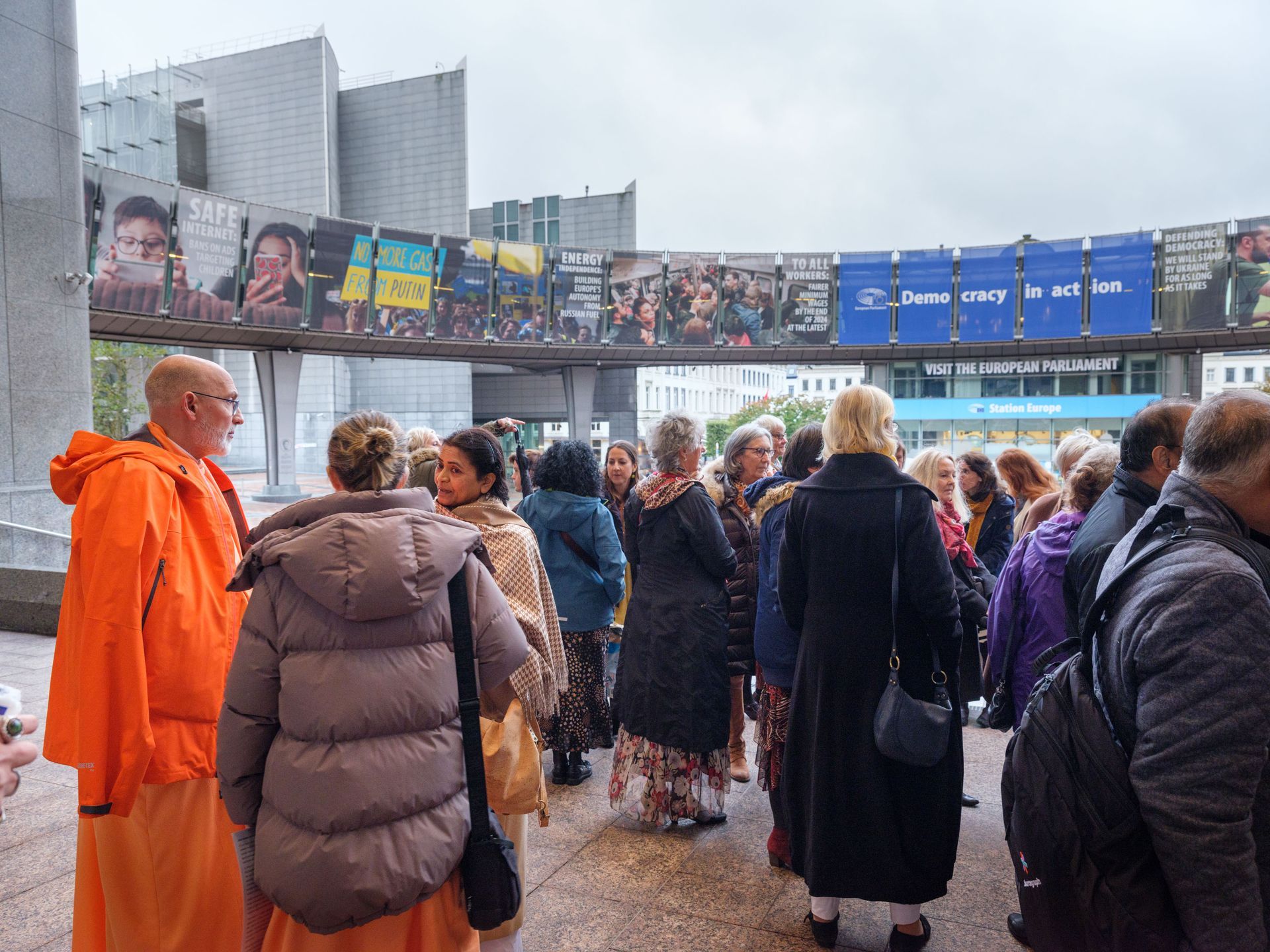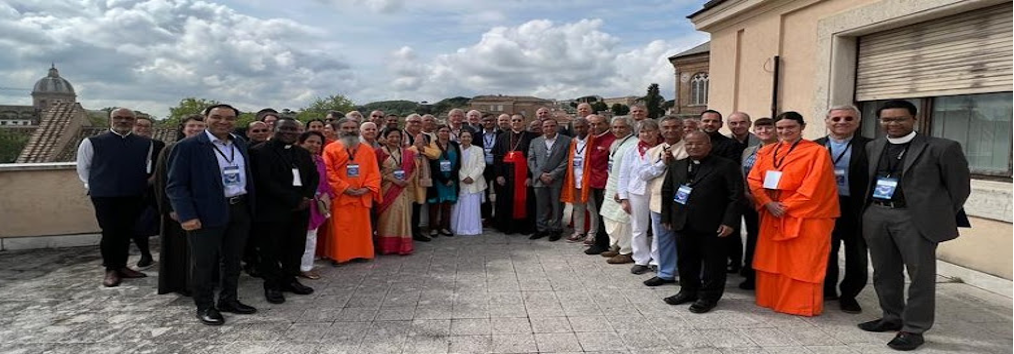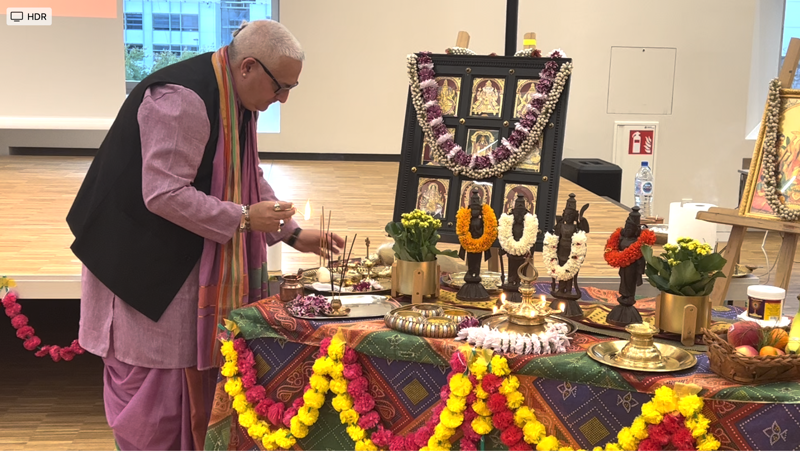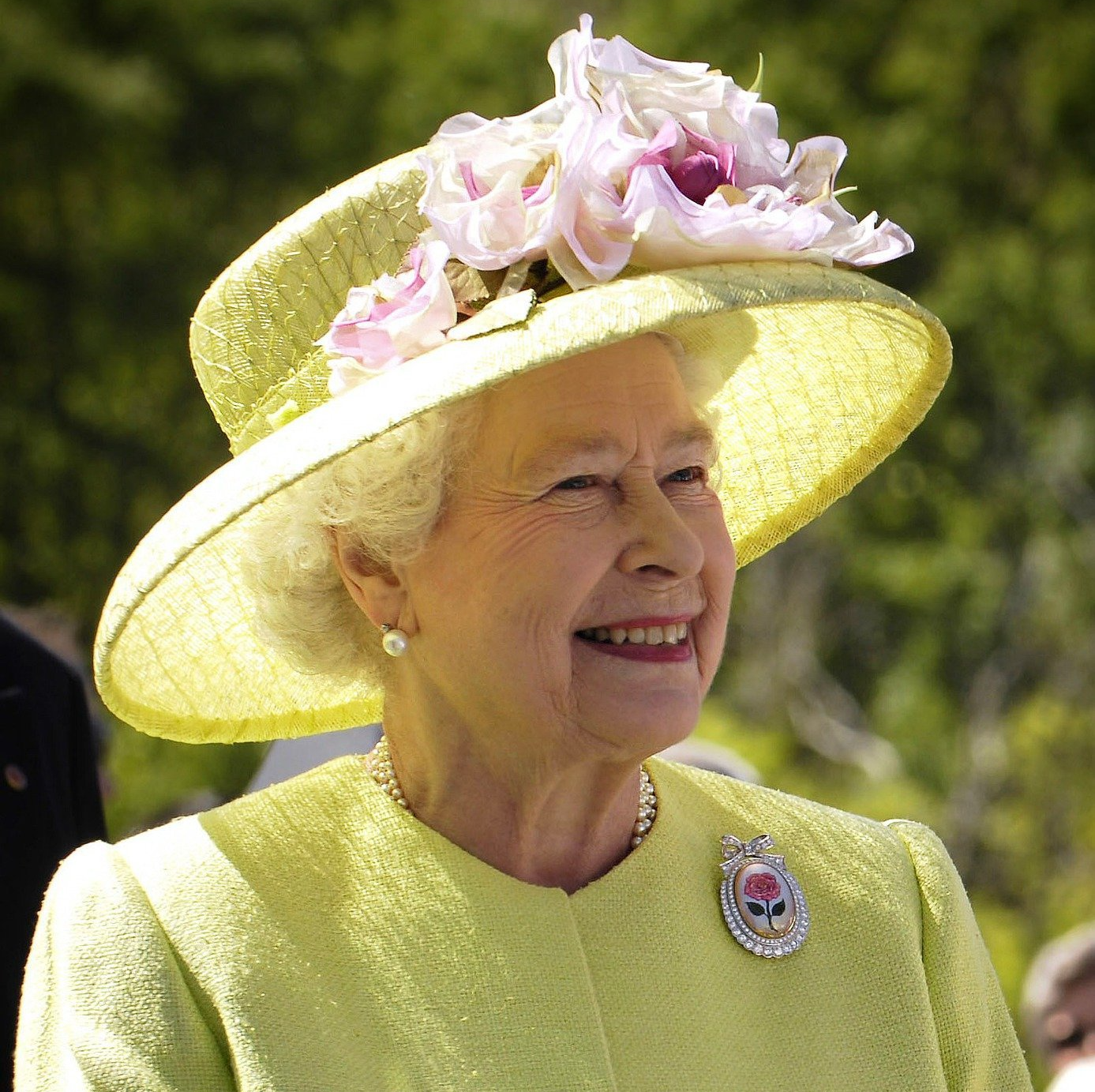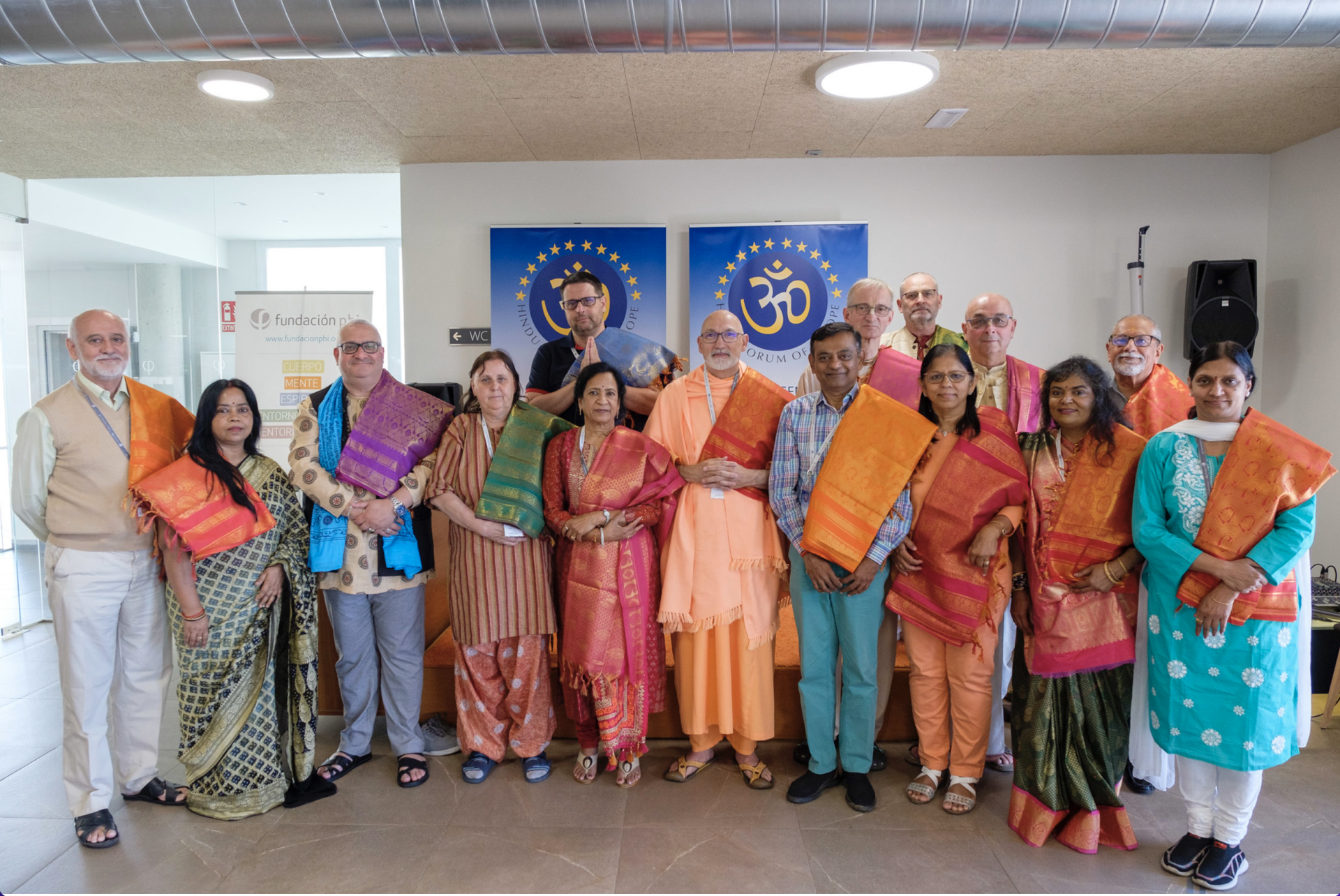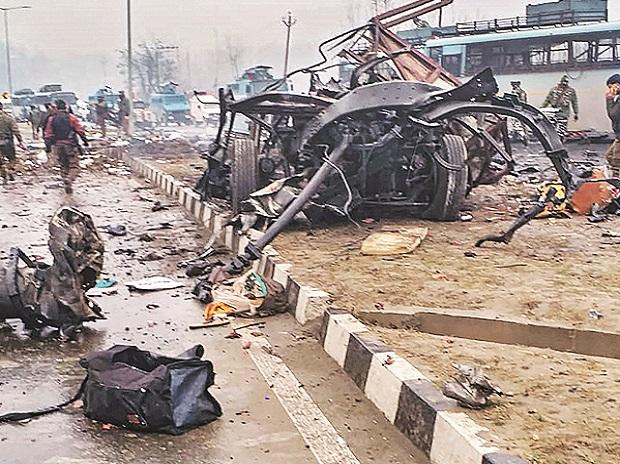Phone: +3222185800 | 07875 022201
Email: info@hinduforum.eu
Considerations related to the safe persons with suspected or confirmed COVID-19
Scope of this document
This document aims to support public health preparedness planning and response activities on the safe handling of bodies of deceased persons with suspected or confirmed COVID-19: at the site of death, during transport, storage and preparation before burial/cremation, and during burial/cremation.
This document builds upon existing ECDC documents, including a rapid risk assessment: outbreak of novel coronavirus disease – 6 th update [1], a technical report on infection prevention and control for COVID – 19 in healthcare settings [2], a guidance for wearing and removing personal protective equipment in healthcare settings for the care of patients with suspected or confirmed COVID – 19 [3] and the WHO guidance on infection prevention and control of epidemic – and pandemic – prone acute respiratory infections in health care [4].
Target audience
Public health authorities in EU/EEA Member States and the United Kingdom.
Background
On 31 December 2019, a cluster of pneumonia cases of unknown aetiology was reported in Wuhan, Hubei Province, China. On 9 January 2020, China CDC reported a novel coronavirus as the causative agent of this outbreak. The virus is phylogenetically in the SARS-CoV clade and called ‘severe acute respiratory syndrome coronavirus 2’ (SARS-CoV-2). The disease associated with the virus is referred to as coronavirus disease 2019 (COVID-19).
Routes of transmission
SARS-CoV-2 virus, the causative agent of COVID-19, is a virus belonging to the family of Coronaviridae (genus: Betacoronavirus), a large family of enveloped, positive-sense single-stranded RNA viruses.
SARS-CoV-2 has been detected in respiratory, faecal and blood specimens [5,6]. The main route of transmission is considered to take place through large respiratory droplets by inhalation or deposition on mucosal surfaces, but other modes of transmission (i.e. airborne and faeco-oral) have also been proposed. Another route implicated in
Suggested citation: European Centre for Disease Prevention and Control. Considerations related to the safe handling of bodies of deceased persons with suspected or confirmed COVID-19. Stockholm: ECDC; 2020.
© European Centre for Disease Prevention and Control, Stockholm, 2020.
the transmission of SARS-CoV-2 includes contact with contaminated fomites due to persistence of the virus on surfaces [7].
The average incubation period is estimated at 5 to 6 days, ranging from 0 to 14 days [8]. There is currently no specific treatment or vaccine against COVID-19.
According to van Doremalen et al., the environmental stability of SARS-CoV-2 is up to 3 hours post aerosolisation, up to 4 hours on copper, up to 24 hours on cardboard and up to 2–3 days on plastic and stainless steel [7]. These findings are in line with the results obtained for environmental stability of SARS-CoV-1.
Specific risks related to the handling bodies of deceased persons with suspected or confirmed COVID-19
There is no evidence so far of transmission of SARS-CoV-2 through the handling of bodies of deceased persons. The potential risk of transmission related to the handling of bodies of deceased persons with suspected or confirmed COVID-19 is considered low and can be related to:
direct contact with human remains or bodily fluids where the virus is present – direct contact with contaminated fomites.
As viable SARS-CoV-2 may persist on surfaces for days [7], there is the possibility that the virus also persists on deceased bodies. Therefore, unnecessary contact with bodies should be minimised by those not wearing personal protective equipment (PPE). Those in direct contact with deceased cases of COVID-19 (both suspected or confirmed) should be protected from exposure to infected bodily fluids, contaminated objects, or other contaminated environmental surfaces through wearing of appropriate PPE. Minimum requirements include gloves and a long-sleeved water-resistant gown.
During standard handling, the risk associated with transmission of droplets or aerosol from the airways of the deceased is considered low. Conversely, aerosol-generating procedures or procedures that can lead to splashes during post-mortem examinations carry a higher risk and require appropriate PPE (e.g. eye protection and facial filter piece (FFP) respirators, categories 2 or 3 (FFP2, FFP3).
Considerations to reduce the risk of transmission when handling dead bodies with suspected or confirmed COVID-19
Administrative measures
- Establish a preparedness plan for the handling of dead bodies of suspected or confirmed COVID-19 cases, addressing access to adequately trained staff, transportation, equipment and the physical structures needed for storage of bodies and performance of burials and cremations.
- Review national civil contingency plans for surge capacity to manage dead bodies in order to verify their current applicability in case the current capacity to manage dead bodies is exceeded. Besides targeting storage facilities, also address organisational structures involved in memorial services, burials and cremations in order to minimise delays between time of death and burial/cremation.
- Identify key professional groups within and outside the healthcare system that are involved in the handling of dead bodies. Besides healthcare staff, this could include primary care, morgue staff, funeral agencies, transportation services, religious representatives, and organisational structures undertaking burials or cremations. Ensure that they know how to access current official recommendations. Assess the need of PPE for each of these groups; if PPE is supplied, ensure there is adequate training in its use.
- As the practices for caring for the deceased vary according to local, cultural and religious context, consult with stakeholders, particularly religious representatives, to ensure that changes to standard practice are acceptable. Transparent conversation with such societal leaders is likely to be essential to sustain trust between authorities and the community.
Preparation at site of death
Last offices (care after death)
‘Last offices’ refers to the preparation of the deceased directly after death and before transportation. Groups frequently involved in this activity can include healthcare staff, family/mourners and religious officials. Risks of transmission during last offices are mainly related to direct contact with human remains or bodily fluids where the virus is present, or through contaminated fomites or surfaces at the deceased’s care site.
- Standard and non-invasive last offices body preparations, such as combing, cleaning and washing, may be performed using appropriate standard precautions and PPE preventing transmission through direct contact.
Minimum requirements include gloves and long-sleeved water-resistant gown.
- If persons who are not trained in the use of standard precautions and PPE are to actively participate in last offices by touching the body (e.g. family, mourners and religious officials), staff need to ensure that they receive support in this. In case of limited PPE availability or shortage of staff to supervise visitors in their use of PPE, consider to limit direct physical involvement of non-healthcare staff to the extent that is acceptable.
Preparing for transport
Staff responsible for wrapping bodies before transport should wear appropriate PPE to minimise exposure to infected bodily fluids, contaminated objects and other contaminated environmental surfaces. The suggested set of PPE for the staff responsible for bagging/wrapping bodies is gloves and long-sleeved water-resistant gown.
Environmental cleaning and waste management at site of death site
- Regular cleaning followed by disinfection is recommended. Cleaning personnel should use hospital disinfectants active against viruses. If there is a shortage of hospital disinfectants, decontamination may be performed with 0.1% sodium hypochlorite (dilution 1:50 if household bleach at an initial concentration of 5% is used) after cleaning with a neutral detergent, although no data are available on the effectiveness of this approach against SARS-CoV-2 [9]. If a surface is likely to be damaged by sodium hypochlorite, an alternative is to use a neutral detergent, followed by a 70% concentration of ethanol.
- Waste should be treated as infectious clinical waste Category B (UN3291) [10] and handled in accordance with healthcare facility policies and local regulations.
- In addition to the above recommendations, cleaning and waste management staff should wear appropriate PPE: surgical mask, gloves, goggles and gown [11].
Considerations for community deaths
Although the majority of deaths from COVD-19 have been in hospitals, and the risk of transmission from the deceased is likely to be low,authorities that will manage dead bodies in the community, such as ambulance staff, police and general practitioners, should have access to PPE. This is particularly important if they have reason to suspect that the deceased was a COVID-19 case.
Transportation from site of death to body storage site
- Direct contact with human remains or bodily fluids should be minimised during transport of the body from the site of death and during reception at the designated body storage sites.
- Those in contact with the wrapped body should wear appropriate PPE to minimise exposure to infected bodily fluids, contaminated objects and other contaminated environmental surfaces. The suggested set of PPE is gloves and long-sleeved water-resistant gown.
Storage and preparation of body before burial/cremation
- Shrouding and preparation of the body for viewing and/or funeral can be performed by using appropriate standard precautions and PPE to prevent transmission through direct contact. Minimum requirements include gloves and long-sleeved water-resistant gown.
- Viewing of the body for mourners can be performed. If mourners or religious representatives are to touch the body, standard precautions and PPE preventing transmission through direct contact should be used. Minimum requirements include gloves and long-sleeved water-resistant gown. Staff need to ensure that mourners receive support in the appropriate use of PPE. In case of limited PPE availability or shortage of staff to supervise visitors, consider to restrict touching during viewing.
- If post-mortem examinations are needed, aerosol-generating procedures, including the use of fast-spinning power tools, should be avoided if possible. If aerosol generation is likely (for example if power tools are used), appropriate PPE should be used.
- Embalming can be performed using appropriate standard precautions and PPE to prevent transmission through direct contact. Minimum requirements include gloves and long-sleeved water-resistant gown.
Burial/cremation
- Decedents with confirmed or suspected COVID-19 can be buried or cremated as usual.
Contributing authors (in alphabetical order)
Liselotte Diaz Högberg, Orlando Cenciarelli, Pete Kinross, John Kinsman, Diamantis Plachouras
References
- European Centre for Disease Prevention and Control (ECDC). Rapid risk assessment: Outbreak of novel coronavirus disease 2019 (COVID-19): increased transmission globally – sixth update. Stockholm: ECDC; 2020. Available from: https://www.ecdc.europa.eu/en/publications – data/rapid – risk – assessment – novel coronavirus – disease – 2019 – covid – 19 – pandemic – increased .
- European Centre for Disease Prevention and Control (ECDC). Infection prevention and control for COVID-19 in healthcare settings. Stockholm: ECDC; 2020. Available from:
- European Centre for Disease Prevention and Control (ECDC). Guidance for wearing and removing personal protective equipment in healthcare settings for the care of patients with suspected or confirmed COVID-19 2020 [cited 2020 8 March]. Stockholm: ECDC; 2020. Available from: https://www.ecdc.europa.eu/en/publications – data/guidance – wearing – and – removing – personal – protective equipment – healthcare – settings .
- World Health Organization (WHO). Infection prevention and control of epidemic-and pandemic prone acute respiratory infections in health care. Geneva: WHO; 2014 [17 January 2020]. Available from: https://www.who.int/csr/bioriskreduction/infection_control/publication/en/ .
- Wang W, Xu Y, Gao R, Lu R, Han K, Wu G, et al. Detection of SARS-CoV-2 in different types of clinical specimens. JAMA. 2020.
- World Health Organization (WHO). Report of the WHO–China Joint mission on coronavirus disease 2019 (COVID-19) 2020. Geneva: WHO; 2020. Available from: https://www.who.int/docs/default source/coronaviruse/who – china – joint – mission – on – covid – 19 – final – report.pdf .
- van Doremalen N, Bushmaker T, Morris D, Holbrook M, Gamble A, Williamson B, et al. Aerosol and surface stability of HCoV-19 (SARS-CoV-2) compared to SARS-CoV-1. medRxiv. 2020.
- World Health Organization (WHO). Coronavirus disease 2019 (COVID-19) Situation Report – 29. Geneva: WHO; 2020. [cited 2020 24 February]. Available from: https://www.who.int/docs/default source/coronaviruse/situation – reports/20200219 – sitrep – 30 – covid – 19.pdf?sfvrsn=6e50645_2 .
- European Centre for Disease Prevention and Control (ECDC). Interim guidance for environmental cleaning in non-healthcare facilities exposed to SARS-CoV-2 2020. Stockholm: ECDC; 2020. Available from: https://www.ecdc.europa.eu/sites/default/files/documents/coronavirus – SARS – CoV – 2 – guidance environmental – cleaning – non – healthcare – facilities.pdf
- World Health Organization (WHO). Guidance on regulations for the transport of infectious substances 2013– 2014. Geneva: WHO; 2012. Available from: https://apps.who.int/iris/bitstream/handle/10665/78075/WHO_HSE_GCR_2012.12_eng.pdf?sequence=1 .
- World Health Organization (WHO). Rational use of personal protective equipment for coronavirus disease 2019 (COVID-19). Geneva: WHO; 2020 [updated 27 February 2020]. Available from: https://apps.who.int/iris/bitstream/handle/10665/331215/WHO – 2019 – nCov – IPCPPE_use – 2020.1 – eng.pdf .
The post Considerations related to the safe persons with suspected or confirmed COVID-19 appeared first on Hindu Forum of Europe.
HFE Contacts
Address:
Rue Du Luxembourg
Brussels 1000, Belgium
Phone:
Email: info@hinduforum.eu | vyasnili@gmail.com
Web: https://www.hinduforum.eu/
Facebook: https://www.facebook.com/HinduForumOfEurope
HFE Members
Confederazione Italiana per Concienza de Krishna
Hindu Forum of Sweden
All Rights Reserved | Hindu Forum of Europe | Privacy Policy


